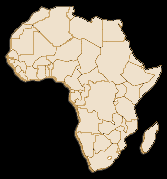|
|
Here
are the facts.
What
is Ebola?
- Highly contagious
form of viral hemorrhagic fever
- Melts internal
organs, causes bodily fluids to pour from every orifice
- Causes
death in up to 90% of all victims
- Virus stays
alive in bodies of the dead for three days
- 1st identified
in 1976, in Africa.The big unknown – how it lives in nature
- Transmitted
by direct contact with the secretions of infected persons
- No vaccine
exists
- Complicating
factors: Fear, lack of protective equipment, phones and transportation,
distance from diagnostic labs
- Hosts: Humans,
monkeys, chimpanzees, domestic guinea pigs
What
does it look like?

The Ebola Virus, as
seen under a microscope
Where
is it found?
 Mainly
in Africa. Primary countries include Democratic Republic of Congo,
Gabon, Sudan, The Ivory Coast, Uganda and Zaire Mainly
in Africa. Primary countries include Democratic Republic of Congo,
Gabon, Sudan, The Ivory Coast, Uganda and Zaire
How
is it treated?
What's
the latest thinking on a cure?
|
PRESS RELEASES | FILM
SYNOPSIS | PHOTOS | FILM
CREDITS | MEET THE TEAM |
| ENDORSEMENTS | ABOUT
EBOLA | FURTHER READING |
FUNDED BY | WEB
SITE ©2002 ALETHIA PRODUCTIONS
INC.
WEB SITE DESIGN BY CSI MULTIMEDIA
|



 Mainly
in Africa. Primary countries include Democratic Republic of Congo,
Gabon, Sudan, The Ivory Coast, Uganda and Zaire
Mainly
in Africa. Primary countries include Democratic Republic of Congo,
Gabon, Sudan, The Ivory Coast, Uganda and Zaire